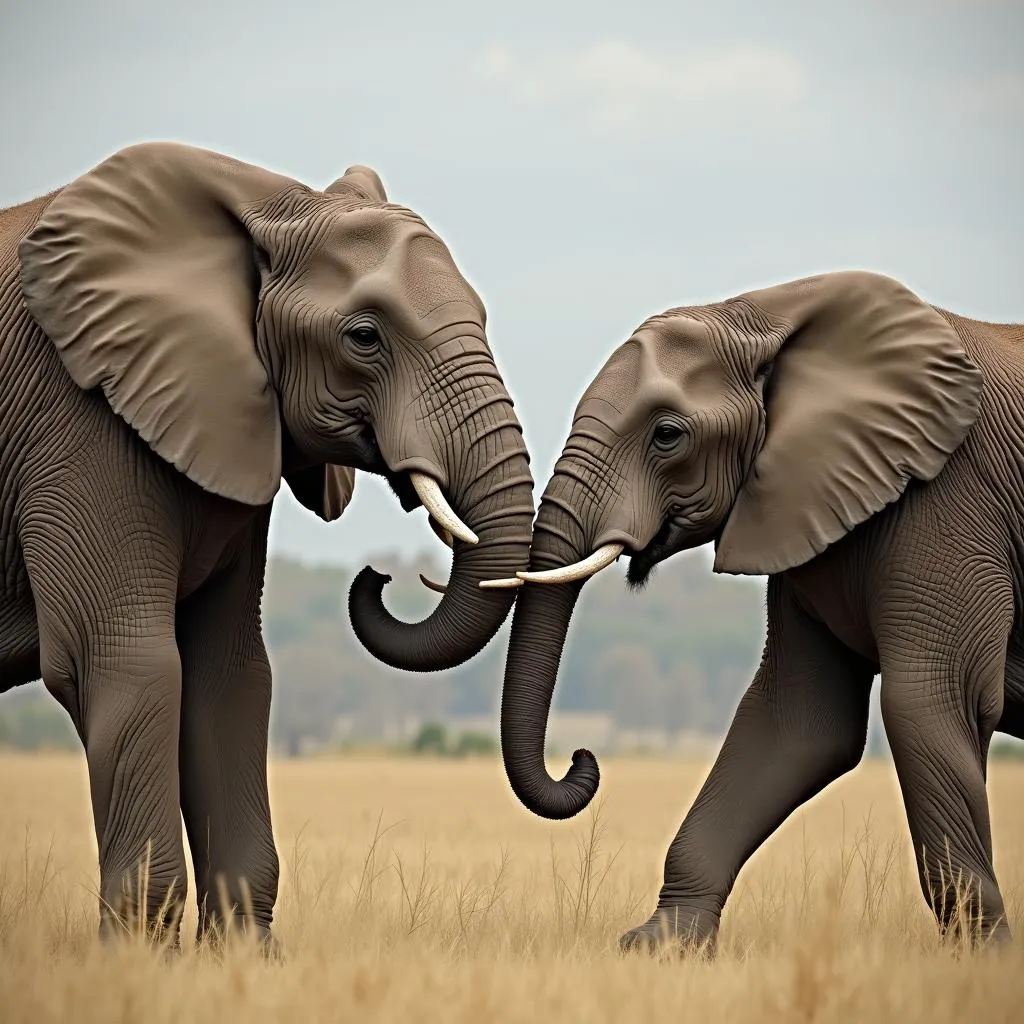Unveiling the Mystery: Why Are African Elephant Ears Shaped Like That?
The African elephant, an iconic symbol of the continent, is instantly recognizable by its sheer size and, most notably, its enormous ears. But have you ever wondered why these majestic creatures possess such distinctively shaped ears? The answer lies not just in aesthetics but in a fascinating interplay of evolution, adaptation, and survival.
The Science Behind the Shape: More Than Meets the Eye
An African elephant’s ears, resembling the continent itself, aren’t merely for show. These massive appendages play a crucial role in their survival, acting as highly efficient thermoregulators. Let’s delve into the science behind their unique design.
A Network of Veins: Nature’s Cooling System
The vast surface area of the ears, riddled with a complex network of blood vessels, acts as a radiator. When the elephant flaps its ears, it creates a breeze that cools the blood flowing through these vessels. This cooled blood then circulates throughout the body, effectively lowering the elephant’s core temperature.
 African Elephant Ear Veins
African Elephant Ear Veins
Amplifying Heat Loss: Size Matters
The sheer size of African elephant ears is no accident. Compared to their Asian counterparts, African elephants inhabit hotter, drier climates. Their larger ears provide a greater surface area for heat exchange, enabling them to regulate their body temperature effectively in the scorching African sun.
A Behavioral Adaptation: Flapping for Relief
African elephants have mastered the art of ear flapping. They can flap their ears independently, adjusting the angle and intensity to optimize cooling. This behavioral adaptation allows them to dissipate heat quickly, especially crucial during periods of intense activity or extreme heat.
Beyond Thermoregulation: Ears as Communication Tools
While thermoregulation is a primary function, African elephant ears also play a significant role in communication.
Sound Amplifiers: Catching Distant Calls
The large surface area of their ears acts as a sound amplifier, enabling them to detect low-frequency sounds, such as the rumbles and calls of other elephants, from miles away. This heightened auditory perception is essential for maintaining social bonds and detecting potential threats within their vast habitats.
Visual Signaling: Conveying Emotions
African elephants use their ears to communicate visually. From spreading wide in aggression to holding them stiffly forward in alertness, ear position serves as a powerful tool for conveying emotions and intentions to other elephants.
 African Elephant Ear Communication
African Elephant Ear Communication
The Evolutionary Advantage: Ears Shaped by Survival
The distinctive shape of African elephant ears is a testament to the power of natural selection. Over millennia, elephants with larger ears, better equipped to regulate their body temperature and communicate effectively, were more likely to survive and reproduce in the challenging African environment. This evolutionary advantage has resulted in the iconic ears we associate with these magnificent creatures today.
FAQs: Unraveling More Elephant Ear Mysteries
1. Why do African elephants have bigger ears than Asian elephants?
African elephants generally inhabit hotter, drier climates than Asian elephants. Their larger ears provide a greater surface area for heat exchange, enabling them to thermoregulate more effectively in such environments.
2. Can elephants use their ears to hear other elephants from miles away?
Yes, the large surface area of their ears acts as a sound amplifier, allowing them to detect low-frequency sounds, including the calls of other elephants, from distances of several miles.
3. Do elephant ears have any other functions besides hearing and cooling?
Yes, African elephants also use their ears for visual communication, conveying emotions and intentions through ear position and movement.
4. How do elephant ears help them survive in the wild?
Their large ears are crucial for thermoregulation, preventing overheating in hot climates. They also enhance auditory communication, aiding in finding mates, detecting danger, and maintaining social cohesion within herds.
Delve Deeper into the African Wilderness
Eager to explore more about the captivating world of African wildlife? Journey with us as we uncover the secrets of the African Great Lakes Rift Valley or delve into the diverse ecosystem of African fruit trees.
Intrigued by the symbolism and artistry of African elephant tattoos? We’ve got you covered! Or perhaps you’re seeking inspiration from the warmth and beauty of an African home vector?
Discover the wonders of Africa with us. Contact us for inquiries at +255768904061, [email protected] or visit our office located in Mbarali DC Mawindi, Kangaga, Tanzania. Our dedicated team is available 24/7 to assist you.



